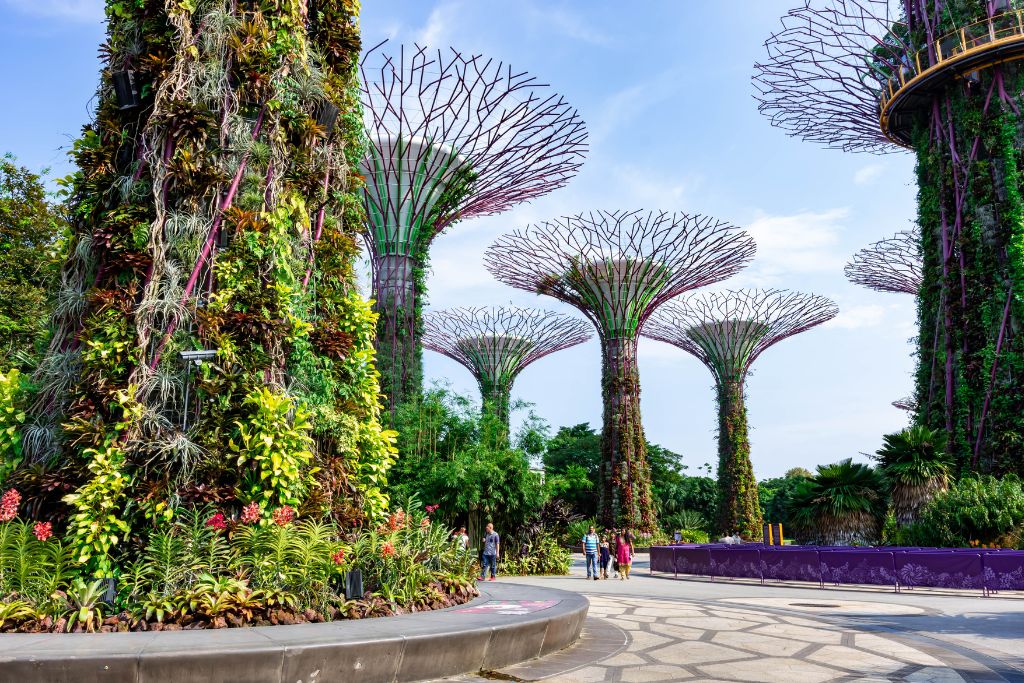Approximately 55% of the global population lives in urban areas. When designing and implementing future cityscapes, urban planners must address the aspirations and concerns of residents, such as environmental sustainability, equity, affordability, and public health. Smart cities assist in streamlining urban planning endeavours via their integrated, responsive smart tech systems connected to the Internet of Things. Real-time data from people, devices, and infrastructure in these cities are analysed to enhance sustainable resource usage, city services and operations, and overall liveability.
—
Urban Planning and Smart Cities
Urban planning is the planning of cities for the future. It is a holistic, interdisciplinary field whose practitioners consult with residents, listen to their needs, and, based on this feedback, draft and implement landscapes and buildings wherein people will live, work, and play. The goal is to actualise local aspirations into material reality using the built environment (and greenfield land).
Over half the global population currently resides in urban areas. This worldwide proportion is estimated to reach nearly 70% by 2050 due to rural-urban drift. Many regions have already exceeded this percentage. For example, Australian statistics from 2021 show that 86% of residents live in urban and suburban areas. And in some locales, such as Singapore, Hong Kong, and Kuwait, the population is 100% urban.
Around the world, people are increasingly drawn to metropolises because they seek a higher quality of life and more opportunities. Larger towns usually offer greater work and education options, better facilities and utilities (such as healthcare, schooling, transport, entertainment, and recreation), and other conveniences that may not be available in rural areas.
Nevertheless, as with most things in life, there are both pros and cons to city life and the growing number of urbanites. Potential struggles include housing affordability, crowding, economic and social inequalities, crime, competition, homelessness, mental illness, and urban stress. An expanding urban populace also leads to increased resource needs, waste, traffic, and pollution.
While the concept of sustainable, green urbanism has a history stretching back to “the ‘garden’ cities of the 1900s and the ‘ecological’ cities of the 1970s”, interest in green cities has soared in the 21st century.
Numerous, pervasive environmental problems are forecast to impact virtually everyone in the future, so the motives driving city sustainability are pretty straightforward. In addition, eco-anxiety is increasing among the world’s youth. One study reveals that around 60% of young people around the globe are “very or extremely worried” (and over 80% are “at least moderately worried”) about climate change. So, urban landscapes – where many of these future adults will live – must be planned to be both prosperous and healthily sustainable. The importance of liveable urban regions is emphasised by the UN’s Sustainable Development Goals (SDGs), the New Urban Agenda, and the Healthy Cities Movement. For instance, SDG 11 seeks to “make cities and human settlements inclusive, safe, resilient and sustainable.”
Much of this responsibility falls on urban planners. Experts in ekistics (the science of human settlements), city planners draw on their expertise in civil engineering, architecture, social sciences, and public administration to tackle issues raised by urban dwellers, present the most feasible solutions to governing bodies, and shape the most habitable cityscapes of tomorrow. It is not a simple endeavour to balance increasing urban density with both liveability and sustainability. However, countries like Singapore have managed to mediate the demands of a high-density, 100% urban landscape while maintaining a high Human Development Index (HDI).
Many questions need to be addressed. What infrastructure and policies are necessary for an urban area to meet the (sometimes conflicting) needs for economic growth, housing affordability, biodiversity and heritage conservation, public health and safety, and social justice and equity? How can resources, the transport system, and waste management best be systematised in urban areas? How will all these systems work together in a harmonious, sustainable, resilient ecosystem, with clean air, renewable energy, and continuous access to necessary resources? How can we ensure that the planet and cities inherited by future generations are as liveable as possible? Sustainable smart cities are one possibility.
You might also like: How Sustainable Cities like Singapore Succeed in Green Urban Development
Smart Cities and Liveability
What makes a city smart? The first component is the widespread incorporation of millions of smart devices and technologies (connected to the Internet of Things – IoT) which produce scores of both stored and real-time data. “Real-time” refers to the instantaneous delivery of this info to users, meaning that data are available immediately, rather than being stored and accessed later. IoT devices are defined as products “that are a combination of product, application, analytics and the Internet/networking.” As you can imagine, the category now encompasses an enormous array of devices and systems.
You might also like: What is A Smart City?
If you live in a more developed urban region, think of the number of smart devices (your phone and so on) and sensors in your home or workplace. Then expand that to include all the smart tech used by every person, home, building, infrastructure, resource, and service in your street, neighbourhood, and city. There are now billions of IoT devices around the world. Each moment of the day and night, these technologies receive, record, and transmit an unthinkable amount of information, much of which is available to users straight away. The individual is now connected to every other facet of society, such as corporations and government, like never before in history. If harnessed wisely, these smart devices and services can drastically improve residents’ quality of life.
This leads to the second component of a high-functioning smart city. This other crucial part revolves around governments effectively monitoring, using, and responding to this sea of data and user feedback to boost liveability and resource efficiency for citizens. So, a successful smart city relies not only on the installation of these systems but also on the efforts of administrative and corporate bodies to use them for the public good. The adoption of these strategies and tools is only a means to an end – to better serve the community.
As a 2018 McKinsey Global Institute report reminds us, the point of becoming a smart city is to “respond more effectively and dynamically to the needs and desires of residents … to optimize the infrastructure, resources, and spaces they share.” The authors also comment that “Asian megacities, with their young populations of digital natives and big urban problems to solve” are rapidly transforming thanks to their “exceptionally high adoption” of smart tech.
They identify eight key domains where smart cities are making great strides. These broad areas are listed below, with some smart technology examples as taken from the report.
- Mobility: Real-time public transport updates, smart parking, demand-based microtransit, e-hailing, congestion pricing, predictive maintenance of transportation infrastructure, and real-time road navigations.
- Security: Smart surveillance, home security systems, crowd management, emergency response optimisation, real-time crime mapping, and data-driven building inspections.
- Healthcare: Data-based public health interventions (such as sanitisation and child care), infectious disease surveillance, telemedicine, and remote patient monitoring.
- Energy: Dynamic electricity pricing, smart streetlights, home energy automation systems, and distribution automation systems.
- Water: Water quality monitoring, water consumption tracking, and smart irrigation.
- Waste: Optimisation of waste collection systems, and digital tracking and payment of waste disposal.
- Economic Development and Housing: Digital land-use and building permitting, business licensing, personalised education, digital business tax filing, and peer-to-peer accommodation platforms.
- Engagement and Community: Digital citizen services, local civic engagement applications, and local connection platforms.
The widespread implementation of smart devices enables governing authorities and citizens to collaborate and exchange data in innovative, progressive ways. In the future, we are likely to see more such services and systems integrated into urban development plans.
You might also like: 4 Commonly-Used Smart City Technologies
Successful Urban Planning in Densely Populated Areas
As previously mentioned, the global number of urbanites is expected to nearly touch 70% by 2050. How can urban planners best achieve high HDI scores in densely populated cities? Singapore is one success story; it is often cited as a model for this kind of development. According to a 2013 report by the Urban Land Institute and Singapore’s Centre for Liveable Cities (CLC), a “people-first” approach is necessary, one that “weaves together the physical, economic, social and environmental aspects of urban living.” You can read their 10 principles here (and more recent publications by the CLC are available here). Some guidance includes:
- Building green, low-energy infrastructure and transportation systems
- Facilitating future-proofed, innovative developments with flexibility and long-term growth in mind.
- Fostering “3P” (people, public, private) partnerships and initiatives.
- Implementing mixed-use, affordable spaces which maximise the utility of even small places.
- Breaking up urban density with a variety of green areas, and bringing nature closer to people (becoming “A City in a Garden”).
- Promoting and celebrating diversity and inclusivity.
- Allowing the community to become “the eyes on the street” to increase security and safety.
Final Thoughts
Although today’s youth and future generations may face many ecological and social crises, there is much hope that humanity’s unlimited ingenuity – as evidenced by smart tech and the planning and development of sophisticated, interconnected, resilient, and adaptable urban environments – will help shield us from the worst impacts of climate change and environmental destruction.
This article was first published on August 11, 2022
You might also like: Top 7 Smart Cities in the World


















